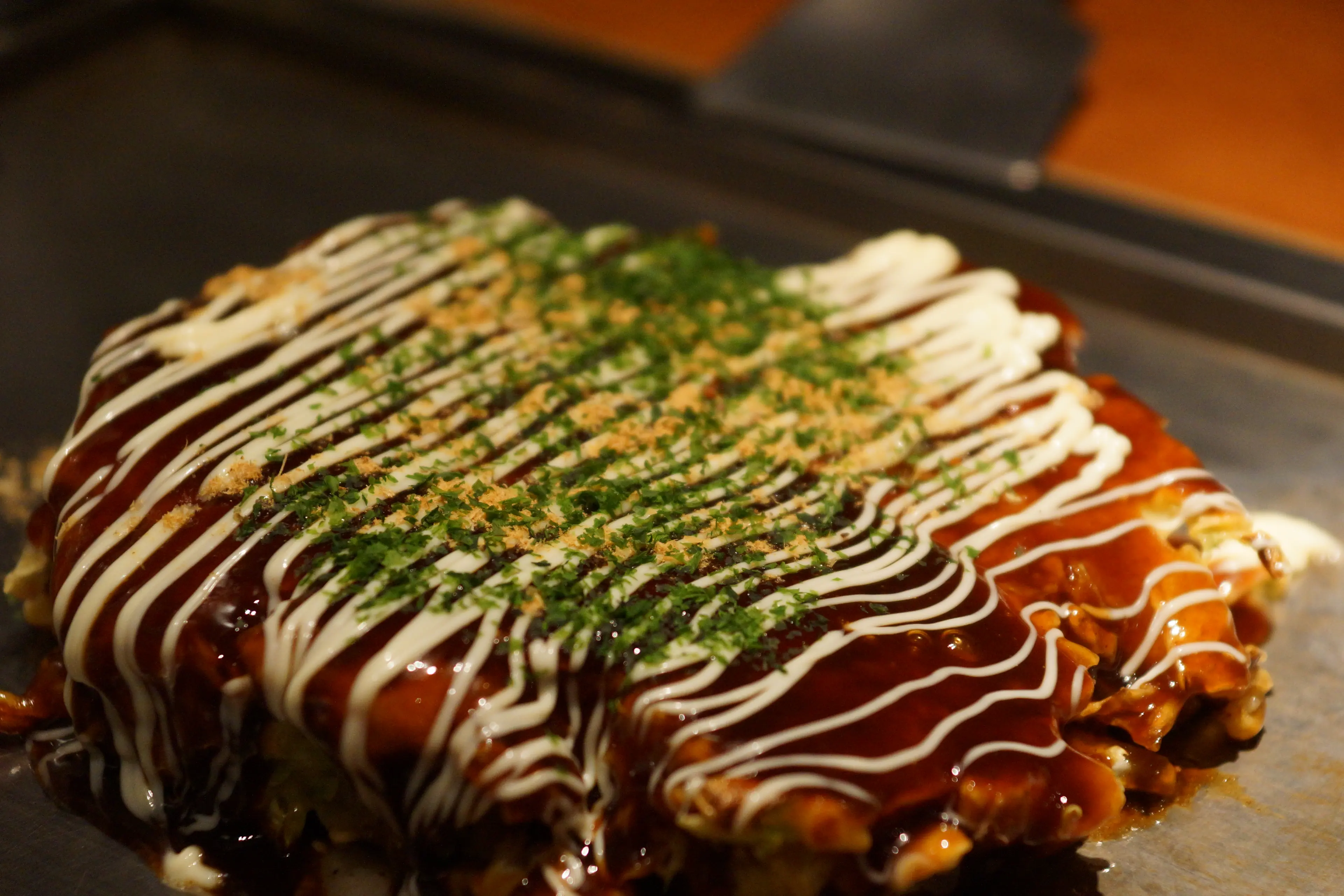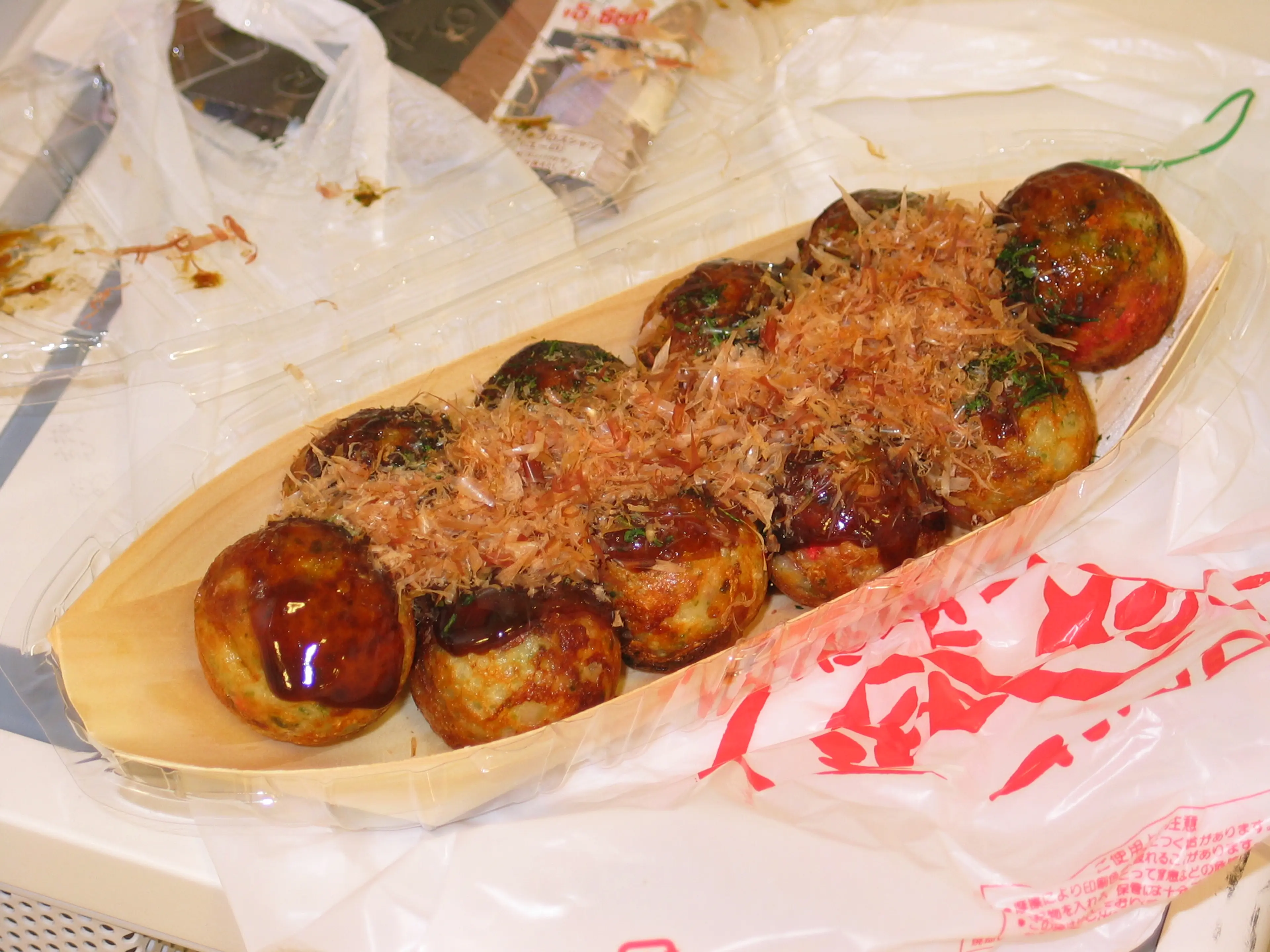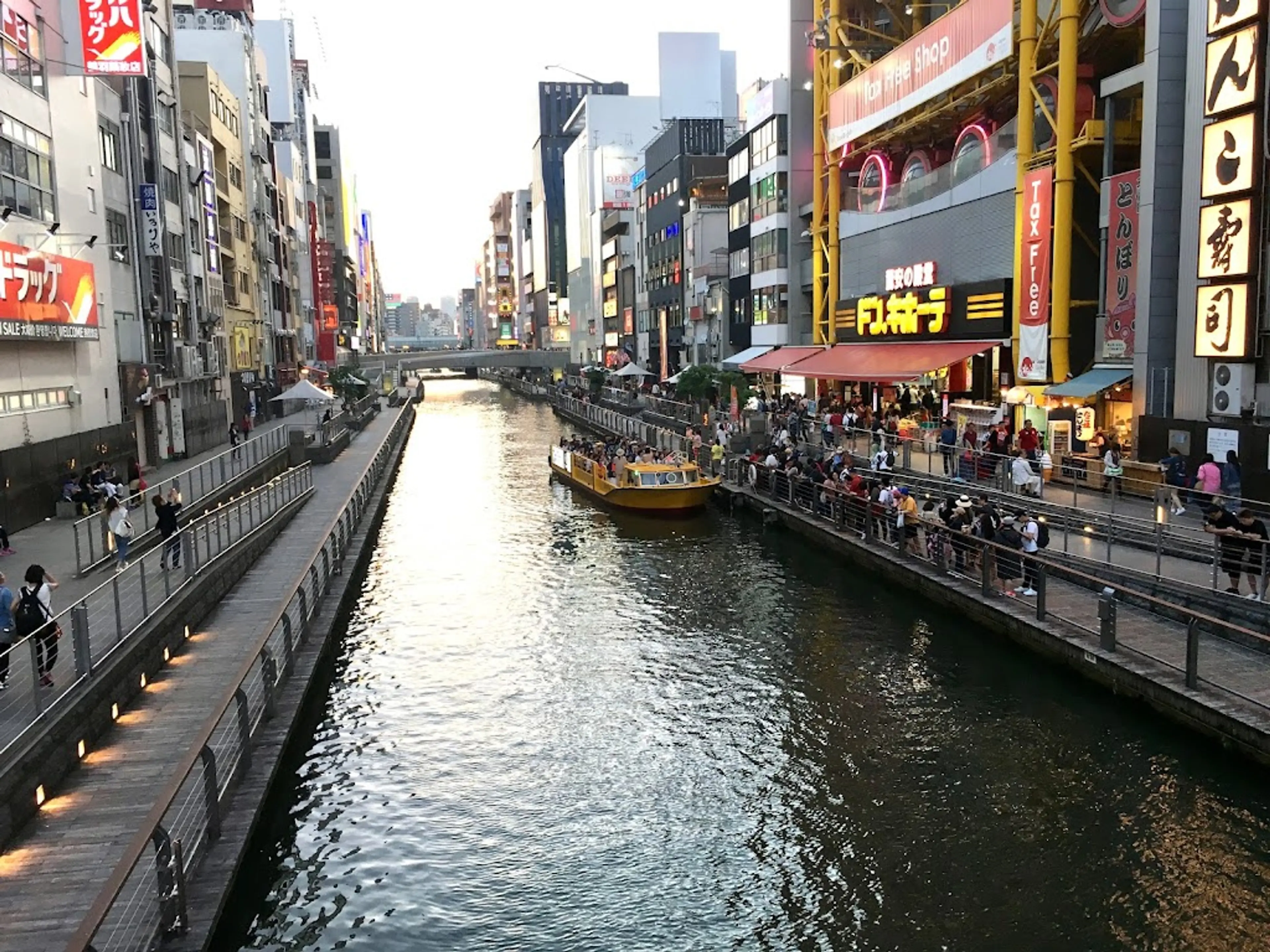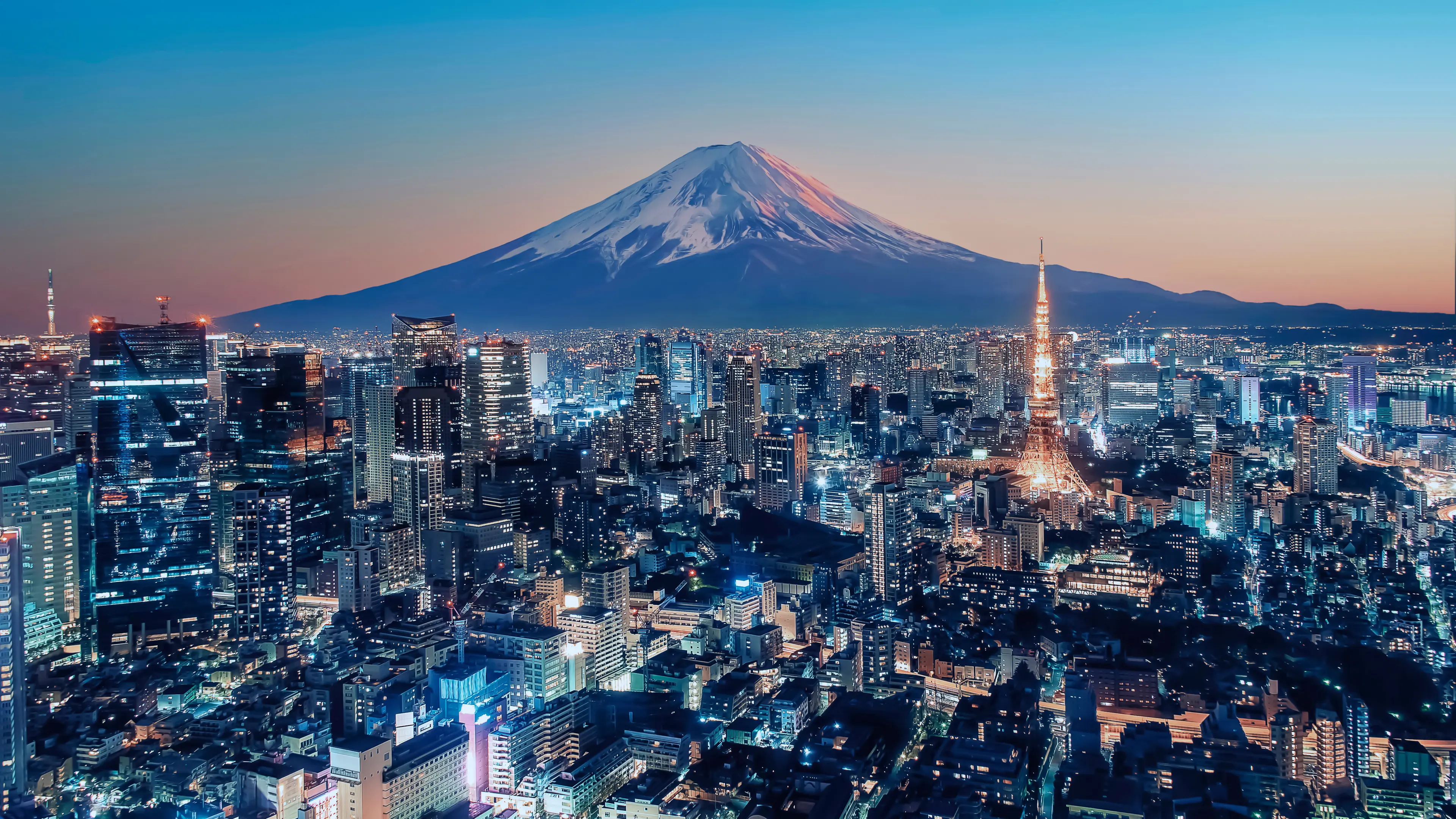4-Day Tokyo Shopping and Nightlife Experience for Couples
Tokyo, Japan
4 days





About Tokyo, Japan
Experience the vibrant culture and modern marvels of Tokyo, Japan's bustling capital. Marvel at the city's iconic landmarks like the Tokyo Tower, Meiji Shrine, and the historic Imperial Palace. Explore the world-renowned Tsukiji Fish Market and savor authentic sushi. Wander through the neon-lit streets of Shibuya and Shinjuku, and immerse yourself in the unique pop culture of Harajuku. Visit Akihabara for cutting-edge electronics and anime goods. Experience tranquility in the midst of urban chaos at Ueno Park and its zoo. Enjoy a panoramic view of the city from the Tokyo Skytree. Tokyo seamlessly blends tradition and innovation, offering a rich cultural experience, from traditional tea ceremonies to high-tech robot restaurants. Whether you're a foodie, a history buff, or a shopaholic, Tokyo has something for everyone.
4-Day Itinerary
Day 2
Historic Asakusa and Glamorous Ginza
Morning
Visit the historic Asakusa district, home to the iconic Senso-ji Temple. Take a leisurely walk around the temple grounds and soak in the serene atmosphere.
Lunch
Have lunch in Asakusa, where you can try traditional Japanese street food like takoyaki (octopus balls) and yakitori (grilled chicken skewers).
Afternoon
Explore the Nakamise Shopping Street in Asakusa, a bustling market street lined with shops selling traditional Japanese crafts, snacks, and souvenirs.
Dinner
Dine in a traditional Japanese restaurant in Ginza, Tokyo's upscale shopping and dining district. Try kaiseki, a traditional multi-course Japanese dinner.
Evening
Experience the glitz and glamour of Tokyo's nightlife in Ginza, known for its high-end bars and clubs. Enjoy a cocktail in a rooftop bar with stunning views of the city.
Day 3
Futuristic Odaiba
Morning
Start your day in Odaiba, a man-made island in Tokyo Bay known for its futuristic architecture and attractions. Visit the teamLab Borderless digital art museum for a unique experience.
Lunch
Enjoy a lunch in one of Odaiba's many restaurants. Try teppanyaki, a style of Japanese cuisine that uses an iron griddle to cook food.
Afternoon
Spend the afternoon shopping in Odaiba's numerous malls and boutiques. Don't miss Palette Town and Venus Fort for a unique shopping experience.
Dinner
Have dinner in a waterfront restaurant in Odaiba, offering stunning views of the Rainbow Bridge and Tokyo skyline.
Evening
End your day with a romantic walk along the Odaiba Seaside Park, offering stunning views of the Tokyo Bay and the city's skyline.
Day 4
Cultural Shibuya and Fashionable Omotesando
Morning
Visit the Meiji Shrine in the morning, a Shinto shrine dedicated to the deified spirits of Emperor Meiji and his wife. The shrine is located in a forest that covers an area of 70 hectares.
Lunch
Have lunch in a local restaurant in Shibuya. Try okonomiyaki, a savory pancake filled with a variety of ingredients.
Afternoon
Spend your afternoon in Omotesando, known as Tokyo's Champs-Elysees. This tree-lined avenue features a multitude of fashion flagship stores designed by internationally renowned architects.
Dinner
Dine in a stylish restaurant in Omotesando. Enjoy a fusion of Japanese and Western cuisine.
Evening
End your Tokyo trip with a visit to Shinjuku, Tokyo's entertainment district. Enjoy the vibrant nightlife, from karaoke bars to nightclubs.
Attractions in Itinerary (11)

1Shibuya Crossing
Known as the busiest intersection in the world, Shibuya Crossing is a popular spot for people-watching and photography.

2Takeshita Street
A bustling pedestrian street in the Harajuku neighborhood, known for its fashion boutiques, cafes, and street food stalls.

3Roppongi
Roppongi is known for its vibrant nightlife and is home to many bars, restaurants, and night clubs.

4Senso-ji Temple
Tokyo's oldest temple, and one of its most significant, featuring a large red lantern at the entrance.

5Ginza
Ginza is Tokyo's premier shopping district, filled with high-end department stores, boutiques, art galleries, restaurants, and coffeehouses. It is also known for its impressive modern architecture.

6teamLab Borderless
teamLab Borderless is a world of artworks without boundaries, a museum without a map. The art moves out of rooms, communicates with other works, influences, and sometimes intermingles with each other with no boundaries.

7Palette Town
Palette Town is a large shopping and entertainment complex featuring a variety of shops, restaurants, and attractions including a giant Ferris wheel and a car-themed amusement park.

8Venus Fort
Venus Fort is a shopping mall designed to resemble a medieval European village. The Sky Feature Program displays a fantastical sky expanding overhead, creating a magical atmosphere where time flows unlike anything in the outside world.

9Odaiba Seaside Park
A popular shopping and entertainment district on a man made island in Tokyo Bay. It offers a selection of attractions, museums and shopping centers.

10Meiji Shrine
A Shinto shrine dedicated to the deified spirits of Emperor Meiji and his wife, Empress Shōken.

11Omotesando
Omotesando is known as Tokyo's Champs-Elysees and features a multitude of fashion flagship stores within a short distance of each other. Its architecture is meant to turn heads and attract crowds.
Local Food and Drinks (12)

Sushi
A world-renowned Japanese dish, sushi is a must-try when in Tokyo. It consists of vinegared rice combined with various ingredients, such as raw or cooked seafood, and vegetables.

Ramen
Ramen is a popular noodle soup dish in Japan. It comes in various flavors like soy sauce, pork bone, and miso. A must-try comfort food when visiting Tokyo.

Sashimi
Sashimi is a traditional Japanese delicacy consisting of fresh raw fish or seafood sliced into thin pieces. It's a must-try for seafood lovers visiting Tokyo.

Tempura
Tempura is a Japanese dish usually consisting of seafood or vegetables that have been battered and deep-fried. It's a popular dish in Tokyo.

Yakitori
Yakitori is a Japanese type of skewered chicken. It's a popular street food in Tokyo and a must-try for meat lovers.

Okonomiyaki
Okonomiyaki is a Japanese savory pancake containing a variety of ingredients. It's a popular comfort food in Tokyo.

Udon
Udon is a type of thick wheat noodle often served hot as a noodle soup in a mildly flavored broth. It's a popular dish in Tokyo.

Matcha
Matcha is a type of powdered green tea. It's a traditional drink in Japan and a must-try when visiting Tokyo.

Sake
Sake is a Japanese rice wine made by fermenting rice. It's a popular alcoholic beverage in Tokyo.

Shabu Shabu
Shabu Shabu is a Japanese hotpot dish of thinly sliced meat and vegetables boiled in water. It's a popular dish in Tokyo.

Takoyaki
Takoyaki is a ball-shaped Japanese snack made of a wheat flour-based batter and cooked in a special molded pan. It's filled with minced or diced octopus, tempura scraps, pickled ginger, and green onion. A popular street food in Tokyo.

Yakisoba
Yakisoba is a classic Japanese stir fry noodles dish with pork and vegetables, and it’s seasoned with a sweet & savory sauce similar to Worcestershire sauce. It's a popular street food in Tokyo.
Best time to visit
The best time to visit Tokyo, Japan is during the spring (March to May) and autumn (September to November) seasons. During these periods, the weather is generally mild and pleasant, and you can enjoy the beautiful cherry blossoms in spring and vibrant autumn leaves in fall. These seasons also offer a variety of festivals and events. However, it's worth noting that these are also peak tourist seasons, so popular attractions may be crowded. If you prefer a quieter trip, consider visiting in the winter months, when the city is less crowded and you can enjoy winter illuminations and hot springs.
How to get around
JR Yamanote Line
This is a railway loop line in Tokyo, operated by East Japan Railway Company (JR East). It is one of Tokyo's busiest and most important lines, connecting most of Tokyo's major stations and urban centres.
Tokyo Metro
Tokyo Metro is a rapid transit system in Tokyo. It is extensive and efficient, covering most of the city's main areas. It operates from early morning till late at night.
Toei Subway
Operated by the Tokyo Metropolitan Bureau of Transportation, it complements the Tokyo Metro by providing service to areas not covered by the Metro.
Tokyo Monorail
This monorail system connects Haneda Airport with Hamamatsucho Station in central Tokyo.
Bus
Buses in Tokyo are a supplementary means of transport, often used for short distances or to reach destinations not covered by the train network.
Taxi
Taxis are widely available throughout Tokyo. They are convenient but can be expensive for long distances.
Ridesharing
Ridesharing services like Uber are available in Tokyo. However, they operate in a limited capacity, offering only premium black car services.
Bicycle
Tokyo is a bike-friendly city with numerous cycling paths and bike rental services. It's a great way to explore the city at your own pace.
Walk
Walking can be an enjoyable way to get around in Tokyo, especially in areas with heavy pedestrian traffic like Shibuya and Ginza.
Water Bus
Water buses operate on several routes along the Sumida River and Tokyo Bay, offering a different perspective of the city.
Rental Car
Renting a car is not recommended for getting around Tokyo due to heavy traffic, expensive tolls, and scarce parking.
Shinkansen
The Shinkansen, or bullet train, is not used for travel within Tokyo but is an important mode of transport for reaching other cities in Japan from Tokyo.
Important information
Currency¥ JPY
Time zoneUTC+9
Driving sideLeft
Emergency phoneAmbulance: 119; Fire: 119; Police: 110
Drinking waterYes
Power sockets
Voltage100 V
Things to know about Tokyo, Japan as a first time visitor
1
Tokyo is a cash-based society. While credit cards are accepted in many places, it's a good idea to always carry some cash with you.
2
The city is known for its cleanliness. Littering is frowned upon, and you may struggle to find public trash cans.
3
Tokyo's public transportation system is efficient and punctual. Make sure to be on time for your train or bus, as they rarely run late.
4
Tipping is not customary in Japan. In fact, it can sometimes be seen as rude or confusing.
5
Japanese people are generally polite and reserved. Loud or boisterous behavior is often considered disrespectful.
6
Many Tokyo residents do not speak fluent English, so it may be helpful to learn a few basic Japanese phrases.
7
Smoking is not allowed on the streets in many areas of Tokyo. Look for designated smoking areas instead.
8
Tokyo is generally safe, but like any large city, it's important to stay aware of your surroundings and keep an eye on your belongings.
9
The city is very pedestrian-friendly, with well-maintained sidewalks and crosswalks. However, be aware that traffic drives on the left in Japan.
10
Tokyo's tap water is safe to drink, and you'll often be served tap water for free at restaurants.
11
Convenience stores in Tokyo are truly convenient, offering a wide range of services from food and drinks to ATMs and postage.
12
Tokyo can be quite crowded, especially during rush hour. Be prepared for crowded trains and busy streets.
13
The weather in Tokyo can be quite variable. Summers are hot and humid, with temperatures often reaching 86°F (30°C), while winters can be cold, with temperatures dropping to around 36°F (2°C).
14
Public restrooms are readily available and generally very clean. However, some may not provide toilet paper, so it's a good idea to carry some with you.
15
Many restaurants and shops in Tokyo do not open until 10 or 11 am, and many stay open late into the evening.
16
Tokyo is a city of high-tech and tradition. Don't be surprised to see a centuries-old shrine next to a skyscraper.
17
If you're planning to use public transportation frequently, consider getting a prepaid Suica or Pasmo card to make travel more convenient.
18
In Japan, it's customary to bow when greeting someone. The deeper the bow, the more respect is shown.
19
Tokyo is known for its high cost of living. However, there are plenty of affordable dining and shopping options if you know where to look.
20
If you're visiting in spring, don't miss the cherry blossoms. Tokyo has numerous parks and gardens where you can enjoy this beautiful spectacle.
Basic Japanese to know as a first time visitor
English phrase | Native phrase | Pronunciation | When to use it |
|---|---|---|---|
Hello | こんにちは | Kon-ni-chi-wa | Greeting someone |
Goodbye | さようなら | Sa-yo-u-na-ra | Leaving or saying goodbye |
Thank you | ありがとう | A-ri-ga-to-u | Expressing gratitude |
Please | お願いします | O-ne-gai-shi-masu | Making a request |
Excuse me | すみません | Su-mi-ma-sen | Getting attention or apologizing |
Yes | はい | Hai | Affirming or agreeing |
No | いいえ | Ii-e | Denying or disagreeing |
I don't understand | わかりません | Wa-ka-ri-ma-sen | When you don't understand something |
Do you speak English? | 英語を話せますか? | Ei-go o ha-na-se-ma-su ka? | Asking if someone speaks English |
I'm sorry | ごめんなさい | Go-men-na-sai | Apologizing |
Where is the bathroom? | トイレはどこですか? | To-i-re wa do-ko de-su ka? | Asking for the location of the bathroom |
How much? | いくらですか? | I-ku-ra de-su ka? | Asking the price of something |
Help! | 助けて! | Ta-su-ke-te! | In an emergency or when in need of help |
I'm lost | 迷子です | Ma-i-go de-su | When you are lost |
Can I have the menu, please? | メニューをください | Me-nyu- o ku-da-sai | Asking for the menu in a restaurant |
Water, please | 水をください | Mi-zu o ku-da-sai | Asking for water |
Check, please | 勘定お願いします | Kan-jo-u o-ne-gai-shi-masu | Asking for the bill in a restaurant |
Good night | おやすみなさい | O-ya-su-mi-na-sai | Saying goodnight |
Where is...? | ...はどこですか? | ...wa do-ko de-su ka? | Asking for a location |
I would like... | ...が欲しいです | ...ga ho-shi-i de-su | Expressing a desire for something |
Packing List
Clothing
Underwear (4 pairs)
Socks (4 pairs)
T-shirts (4)
Pants or jeans (2 pairs)
Comfortable walking shoes
Sweater or jacket
Pajamas
Swimwear (if planning to visit a hot spring or pool)
Rain jacket or umbrella (depending on the season)
Toiletries
Toothbrush and toothpaste
Deodorant
Shampoo and conditioner
Body wash or soap
Razor and shaving cream
Makeup and makeup remover
Hand sanitizer
Travel-sized first aid kit
Prescription medications
Sunscreen
Travel documents and essentials
Passport
Driver's license or ID card
Credit and debit cards
Cash (Japanese yen)
Hotel and flight information
Travel insurance documents
Emergency contacts and addresses
Electronics and gadgets
Smartphone
Charger and adapter
Headphones
Camera
Laptop or tablet (optional)
Portable power bank
Miscellaneous items
Snacks
Travel pillow and eye mask
Reusable water bottle
Books or magazines for the flight
Travel guide and map
Japanese phrasebook or language app
Travel-sized laundry detergent
Ziplock bags for organization
Weather Conditions
When planning a trip to Tokyo, Japan, it's important to consider the city's climate to ensure you pack appropriately and plan your activities accordingly. Tokyo experiences a humid subtropical climate with four distinct seasons. Spring (March to May) is a beautiful time to visit Tokyo, with temperatures ranging from 50°F to 70°F (10°C to 21°C). This is also the season of cherry blossoms, a must-see spectacle. However, it can be quite crowded due to the influx of tourists, so be prepared for that. Summer (June to August) can be quite hot and humid, with temperatures often exceeding 80°F (27°C). This is also the season of the rainy period known as Tsuyu, which usually occurs in early summer. So, if you're visiting during this time, don't forget to pack a good quality umbrella and breathable clothing. Autumn (September to November) is another great time to visit Tokyo. The temperatures are comfortable, ranging from 60°F to 75°F (15°C to 24°C), and the city is adorned with beautiful fall foliage. Winter (December to February) in Tokyo is relatively mild compared to other regions of Japan, with temperatures ranging from 35°F to 50°F (2°C to 10°C). Snowfall is rare but possible. If you're visiting during this time, be sure to pack warm clothing. Regardless of the season, it's always a good idea to check the weather forecast before your trip to make any necessary adjustments to your packing list. Also, keep in mind that Tokyo is a bustling city with lots of walking, so comfortable footwear is a must, regardless of the weather. Lastly, remember that the weather can change quickly, so it's always a good idea to carry a light jacket or umbrella, even if the day starts out sunny. Enjoy your trip to Tokyo!
| Month | Hi / Lo (°C) | Weather Overview |
|---|---|---|
January | 10° / 0° | January is the coldest month in Tokyo, with occasional snowfall. It's a great time to visit if you enjoy winter scenery and less crowded tourist spots. |
February | 11° / 1° | February is still quite cold, but the snowfall is less frequent. The plum blossoms start to bloom towards the end of the month, offering beautiful scenery. |
March | 14° / 4° | March sees the start of spring, with temperatures gradually rising. The cherry blossoms start to bloom, making it a popular time for tourists. |
April | 19° / 9° | April is a pleasant month with mild temperatures. The cherry blossoms are in full bloom, creating a picturesque landscape. |
May | 24° / 14° | May is warm and comfortable, with plenty of sunshine. It's a great time to explore the city and its parks. |
June | 28° / 18° | June is the start of the rainy season, with high humidity. Despite the rain, it's a good time to visit indoor attractions like museums and shopping centers. |
July | 32° / 22° | July is hot and humid, with frequent rain showers. It's a great time to visit the beaches and enjoy the summer festivals. |
August | 34° / 24° | August is the hottest month, with high humidity. Despite the heat, it's a popular time for traditional summer festivals and fireworks. |
September | 30° / 20° | September is still quite warm, but the humidity starts to decrease. It's a great time to visit as the autumn leaves start to change color. |
October | 24° / 14° | October offers comfortable temperatures and beautiful autumn foliage. It's a great time to explore the city and its parks. |
November | 18° / 8° | November is a cool and comfortable month. The autumn leaves are in full bloom, making it a popular time for tourists. |
December | 13° / 3° | December is a cool month with less rainfall. It's a great time to enjoy the winter illuminations and end-of-year festivities. |
Did you know?
Places near by Tokyo, Japan

Yokohama
Japan's second-largest city with a waterfront district, Chinatown and a beautiful park.

Kamakura
A coastal town known for its giant Buddha statue and beautiful temples and shrines.

Hakone
Famous for its hot springs, natural beauty and the view of nearby Mt. Fuji.

Nikko
Known for its ornate shrines and beautiful natural surroundings.

Mount Fuji
Japan's highest mountain and a popular climbing destination.

Matsumoto
Home to one of Japan's most beautiful original castles.

Nagano
Known for its historic temples and the nearby ski resorts.

Kyoto
Famous for its numerous classical Buddhist temples, gardens, imperial palaces, Shinto shrines, and traditional wooden houses.

Osaka
Known for its modern architecture, nightlife, and hearty street food.

Nara
Japan's first permanent capital, it is home to many historic treasures, including some of Japan's oldest and largest temples.


